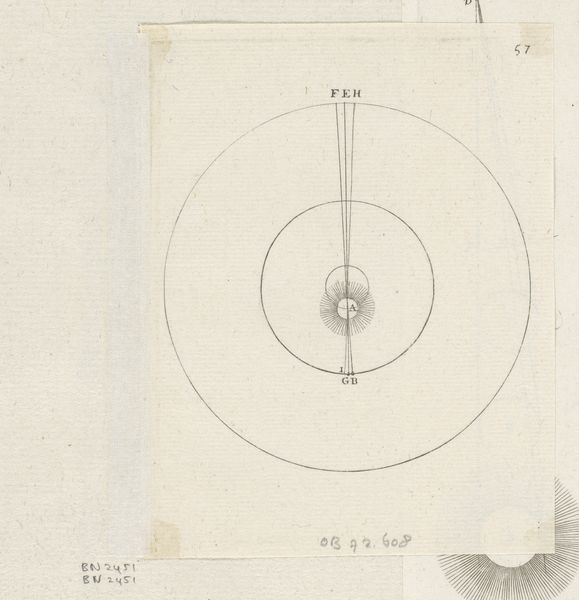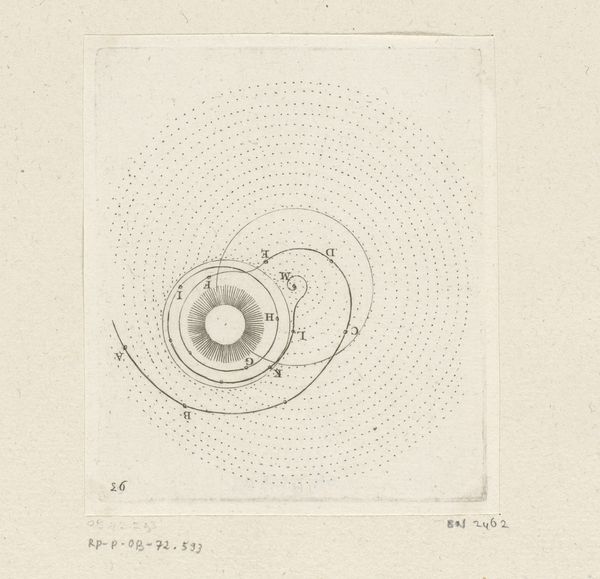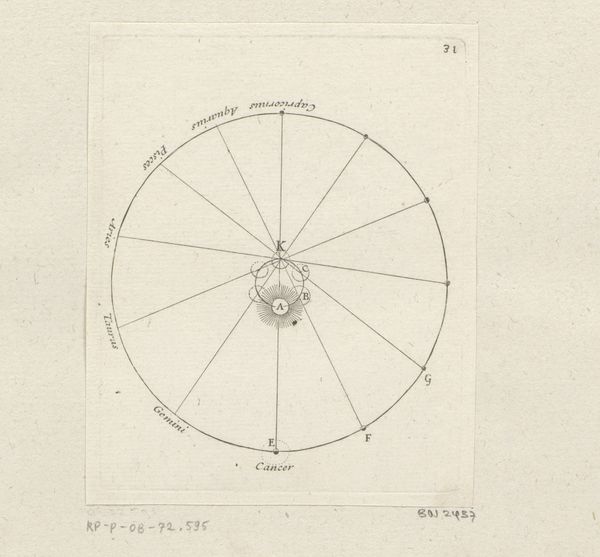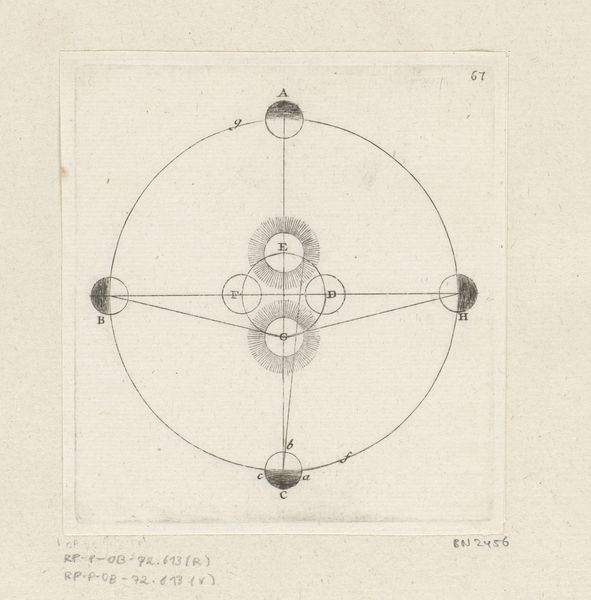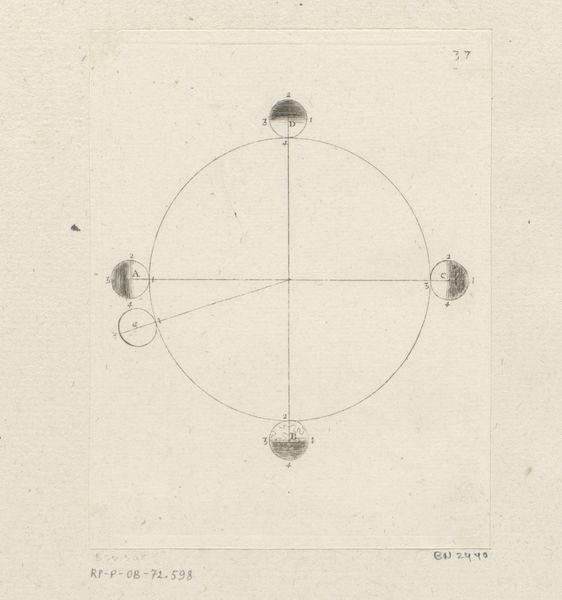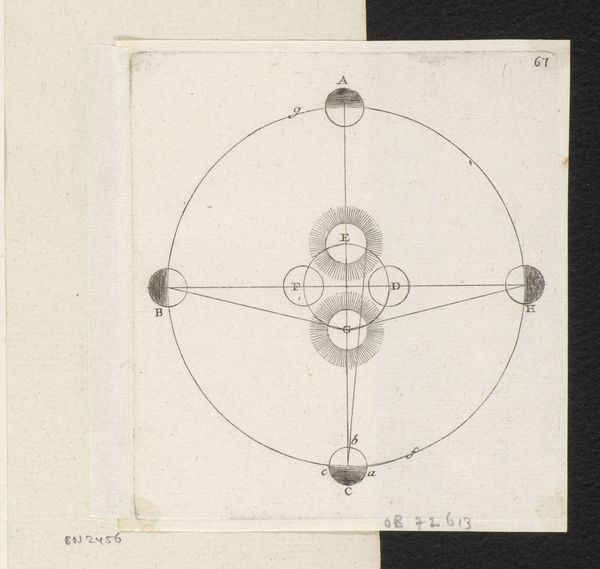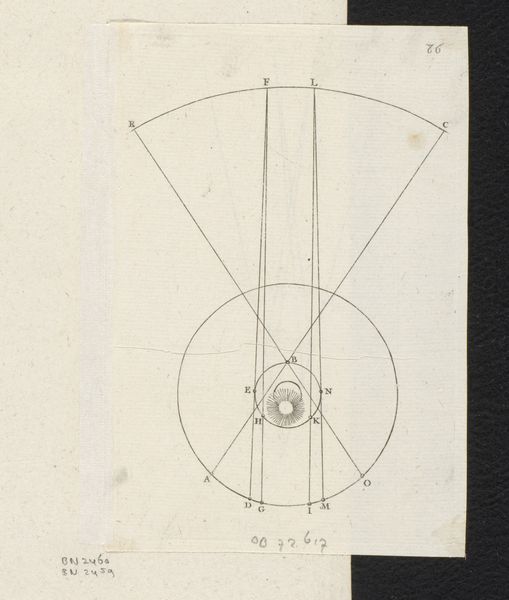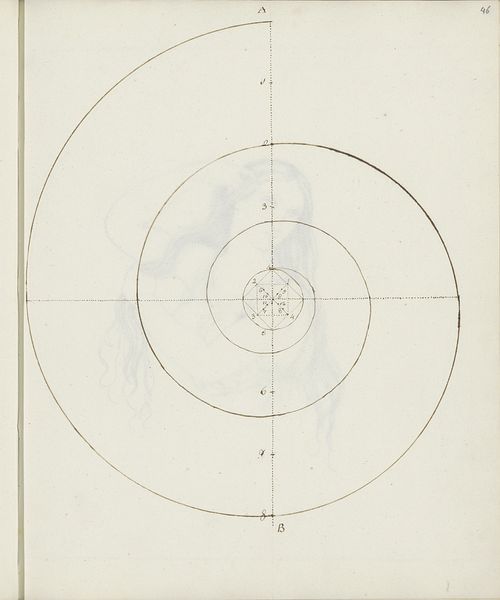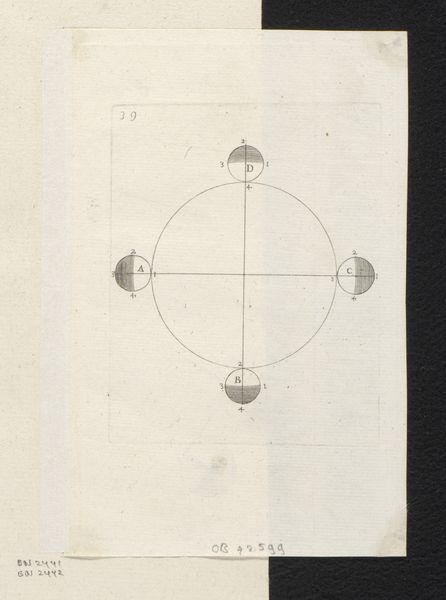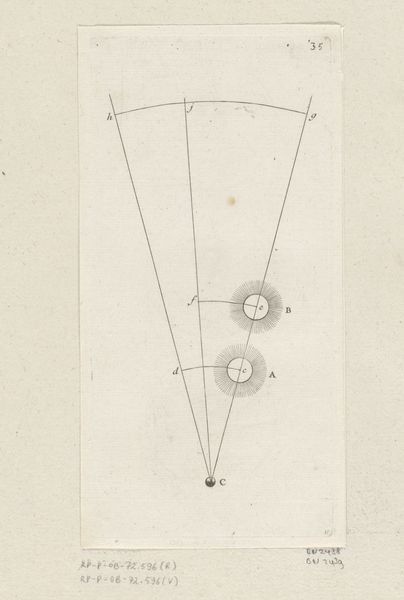
Positie van de Aarde en de Zon in verhouding tot het centrum van onze vortex 1706
0:00
0:00
sebastienleclerci
Rijksmuseum
print, engraving
#
aged paper
#
baroque
#
parchment
# print
#
old engraving style
#
white palette
#
geometric
#
line
#
academic-art
#
engraving
Dimensions: height 125 mm, width 103 mm
Copyright: Rijks Museum: Open Domain
Editor: This print from 1706 by Sébastien Leclerc I, titled "Positie van de Aarde en de Zon in verhouding tot het centrum van onze vortex," is displayed on aged paper and looks like an old engraving. It depicts a diagram of the Earth and Sun’s relative positions. What strikes me is the incredible detail achieved with such simple materials. How does your materialist lens influence your interpretation of it? Curator: Well, immediately, I'm drawn to the process of engraving itself. Think about the labour involved in meticulously carving those lines into the metal plate. The skill required to translate scientific ideas into this reproducible format… that makes it both an art object and a form of early information dissemination. Editor: So you're suggesting that the means of production are central to understanding this print? Curator: Absolutely! And consider the social context. This wasn't mass-produced like today’s prints; each impression required careful inking and pressing. It was a valuable object, accessible mainly to a certain educated class. It speaks volumes about knowledge as a commodity during the Enlightenment. Does knowing this shift your initial response to it at all? Editor: It does. Seeing it as a commodity linked to a specific social class reframes it for me. I now view it as a product of skilled labour for a select audience, rather than a purely scientific diagram. Curator: Exactly. It bridges the gap between craft and scientific illustration, highlighting the intersection of labour, materiality, and consumption within artistic creation. Editor: I see now how the materials and process aren't just means to an end; they're integral to understanding its social and historical significance. Curator: Precisely. Examining the means of production brings these often overlooked nuances to the surface. This piece is more than meets the eye! Editor: This has changed my understanding. I now see how important it is to investigate not just the aesthetic but also the materials and manufacturing involved.
Comments
No comments
Be the first to comment and join the conversation on the ultimate creative platform.

